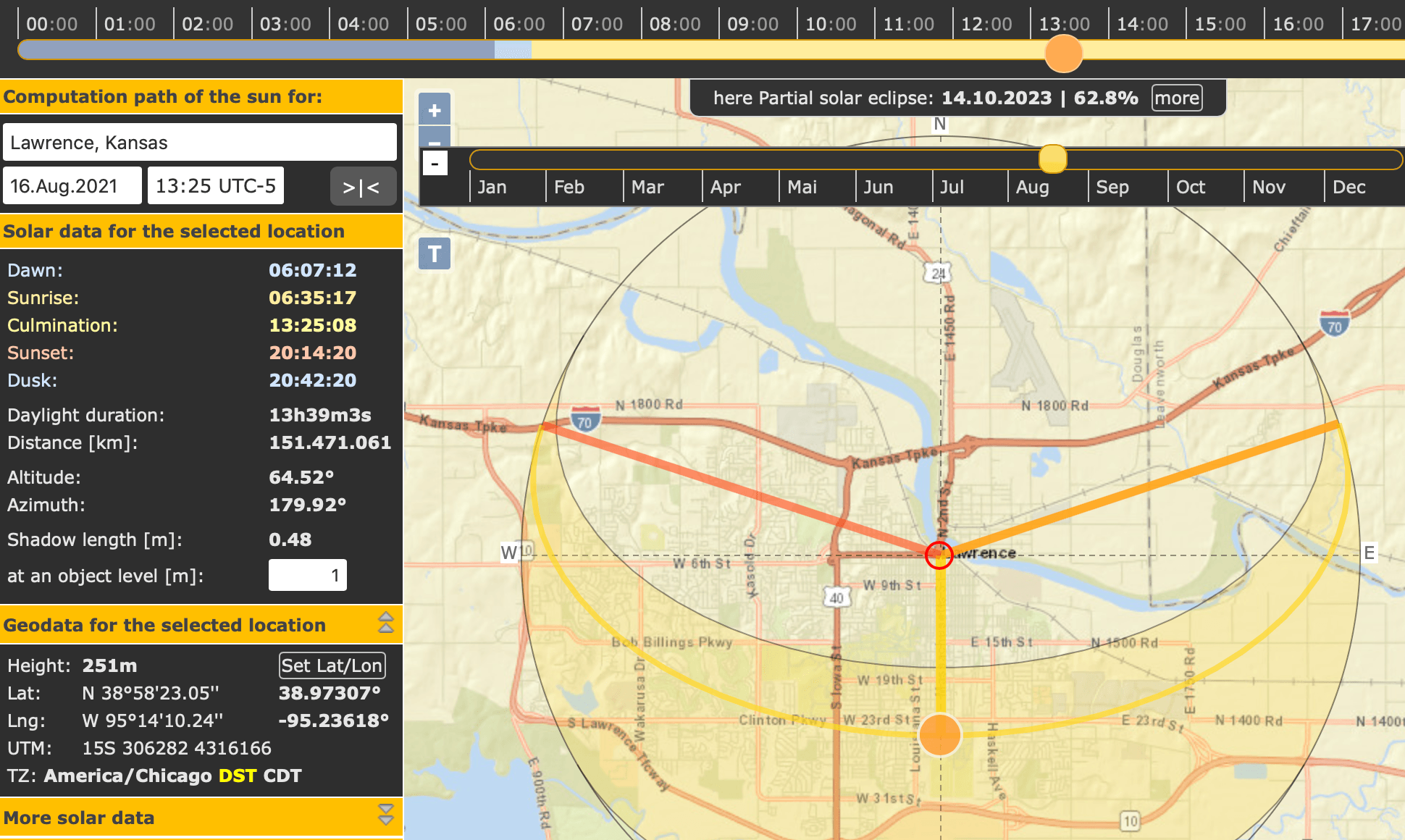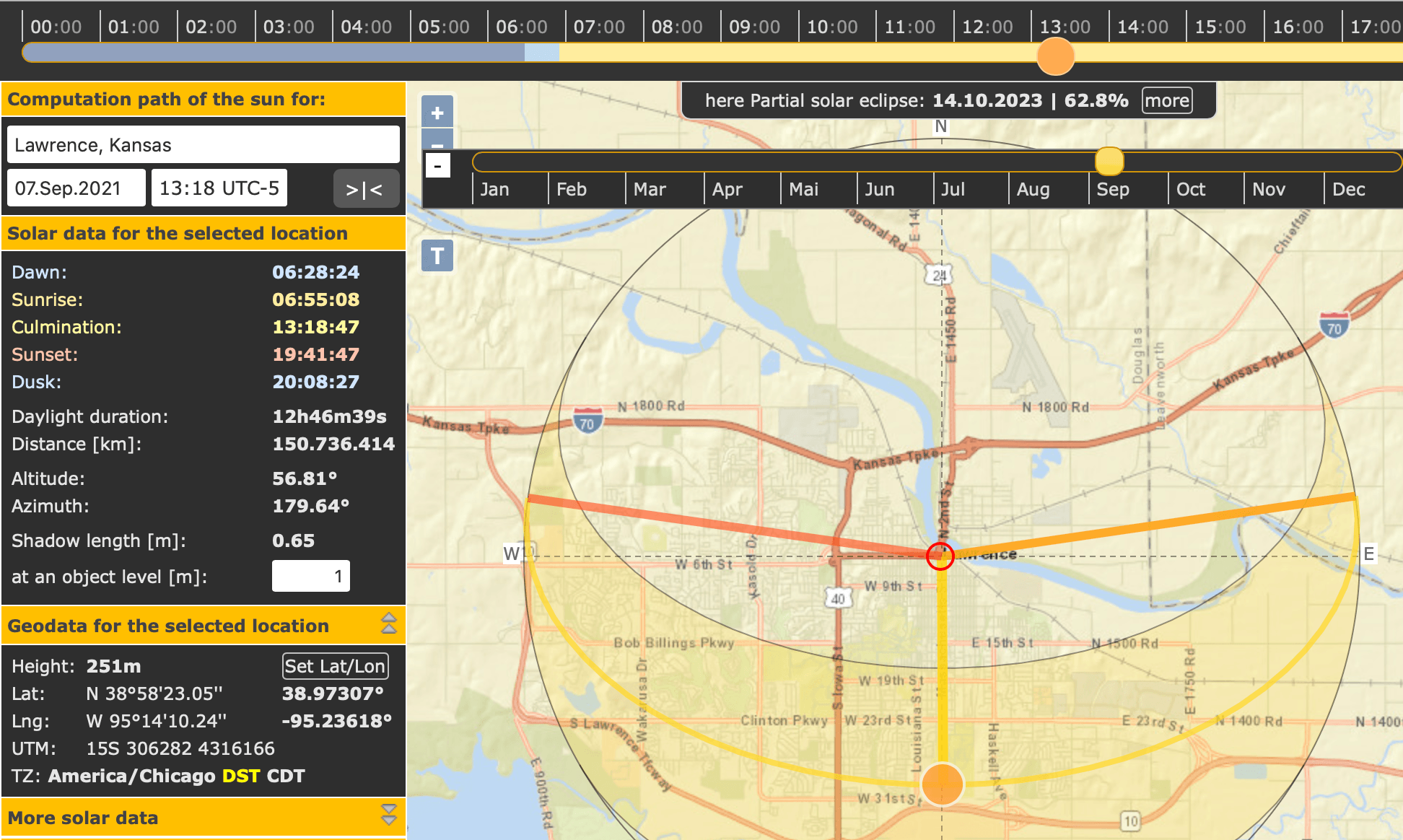Some notes on the sun angle at solar noon (SASN) and the passage of the migration
Tuesday, August 17th, 2021 at 12:46 pm by Chip TaylorFiled under Monarch Migration | Comments Off on Some notes on the sun angle at solar noon (SASN) and the passage of the migration
Linking the timing, pace and duration of the migration to the sun angle at solar noon (SASN) was only possible because thousands of volunteers tagged monarchs from the time monarchs emerged in late summer until the end of the migration. We now know that the migration begins when the SASN drops below 57 degrees over all latitudes with the monarchs reaching the overwintering latitude in Mexico when the SASN also has dropped below 57 degrees. We also know how the composition of the migration changes from the beginning to the end of the migration and much more.
My intention with this text is to provide you with a better understanding of how the migration is related to SASN and how you can acquire these values for your location and dates of tagging.
The migration lasts 25-33 days in most locations. That means there is a beginning or leading edge (that can either be awesome or a trickle) a peak or midpoint, which usually contains a large portion of the migrants, and an end, which is modest in most years and dominated by smaller monarchs, of which a high proportion are females (relative to earlier in the migration).
The SASN values that correspond to these phases of the migration are as follows.
Leading edge – SASN less than 57 degrees to 54 degrees
Mid-point – SASN from 53-50 degrees
End – SASN 49-46 degrees
For reference, each SASN degree represents a little less than three days. However, that relationship varies slightly with latitude.
It helps to keep in mind that while the above SASN values represent “average rates of movement” of the migration, the migration advances more slowly when it’s too cold, too hot, too rainy or too windy.
To calculate the SASN for a specific latitude and date, go to suncalc.org.
I entered Lawrence, KS, USA. Then clicked on culmination to get the correct SASN value for today. After that I opened the tool box indicated by T and clicked on date slider to open that feature. Once that was open, I closed the tool box. The slider allows you to change the dates easily.
The first image shows the SASN – 64.52 (Altitude in the column at the left) for Lawrence, KS for today 16 August – and the second shows the SASN for the 7th of September – the first day that the SASN drops below 57 degrees (56.81 degrees) for this latitude (N 38°58’23.05”). This date is the earliest date we might expect to see the arrival of migrants from the north in Lawrence. The migrants can be distinguished from non-migratory monarchs, that is those that are still reproductive, since they exhibit directional flight with a distinct heading. In our area, the mean heading for migrants is 210 degrees.
As mentioned, it is only because monarchs have been tagged from the time they emerged in late summer until the end of the migration and beyond that we have been able learn how the migration functions. Given the changing climate which appears likely to affect the migration more and more in coming years, it’s important for taggers to continue the practice of tagging monarchs from emergence of the last generation until the last monarchs pass through each latitude.
Screenshot images from suncalc.org:

Image 1.

Image 2.


Sorry, comments for this entry are closed at this time.